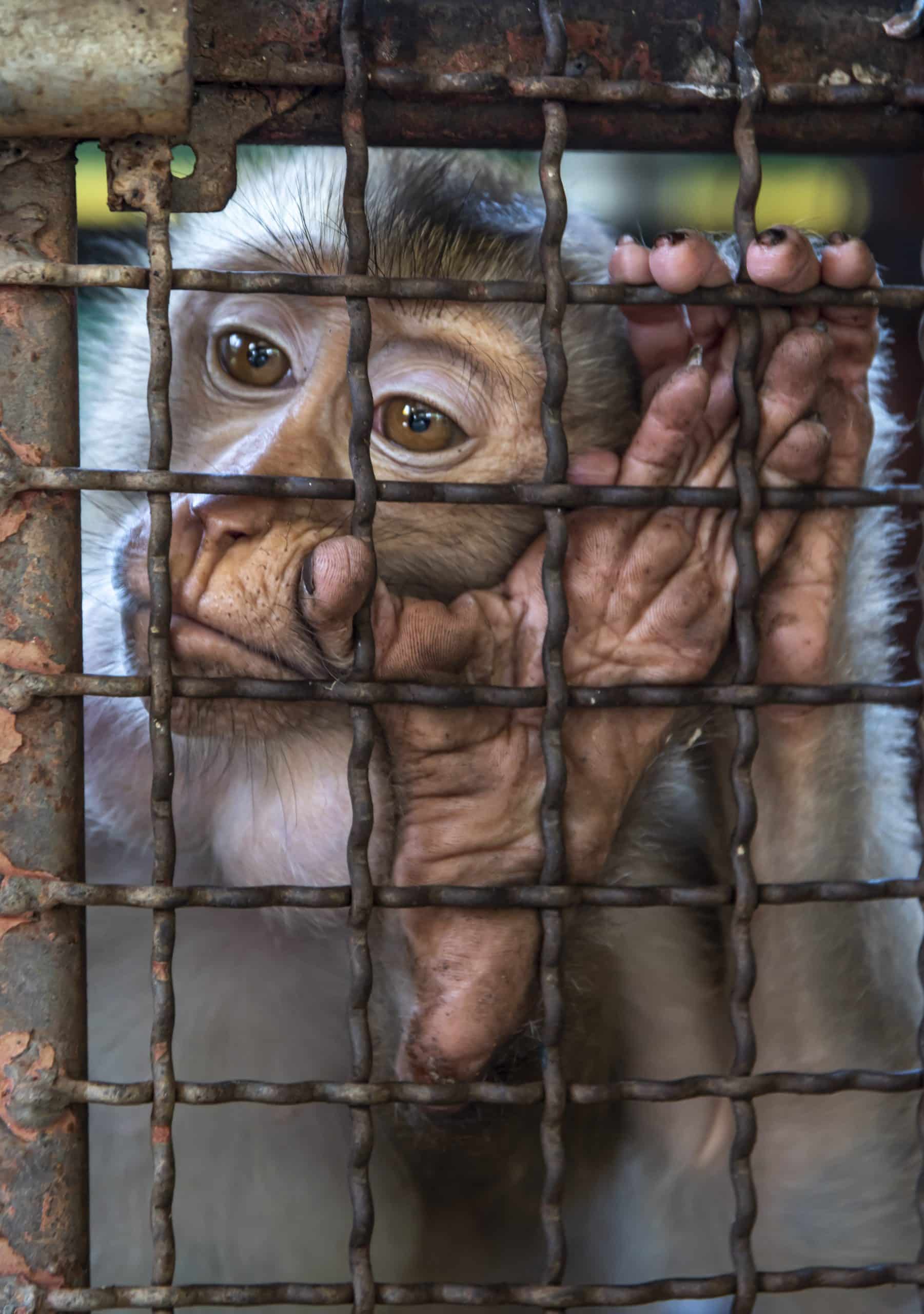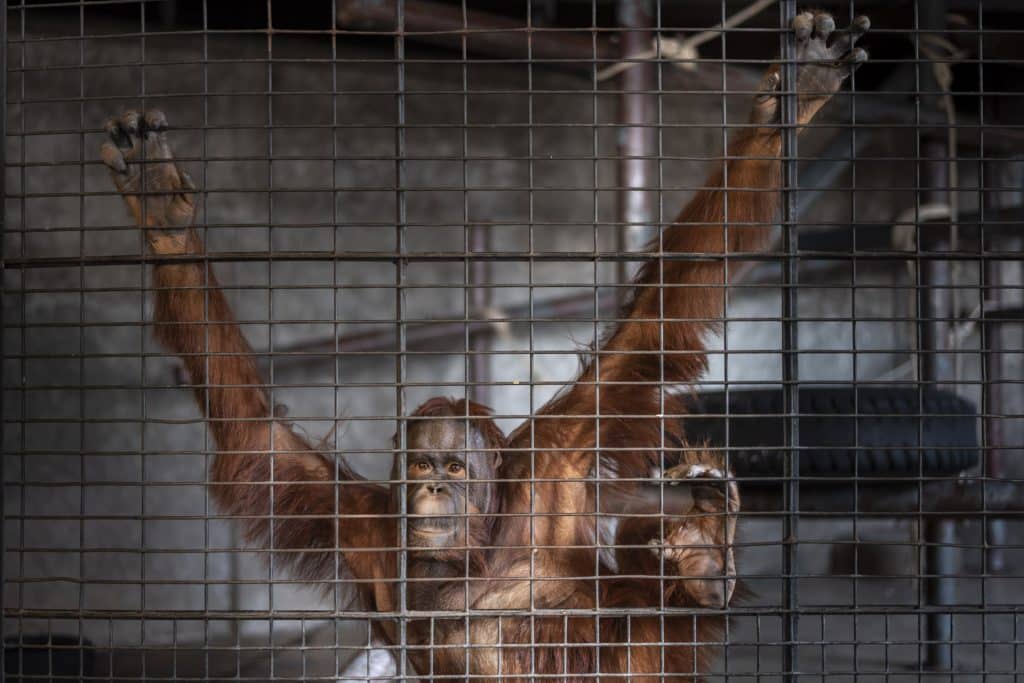If you visit a zoo, chances are the staff will likely tell you some version of the following stories: that your admission ticket goes directly towards conservation efforts in the wild; that the new babies just born help boost wild population numbers; and that the animals are happy and healthy. According to extensive research carried out by Born Free on wild animals in captivity, however, the facts do not confirm these zoo industry fabrications, and instead demonstrate that captivity is harmful for the animals and does very little to enhance species conservation in the wild or adequately educate visitors.
—
It is becoming harder to believe that zoos are good. Between the seemingly random yet frequent animal deaths, alarming escapes, and still decreasing population trends of threatened species in the wild despite promises made by zoos to improve their conservation status, the credibility of zoos seems more fragile now than ever -– and perhaps requires serious reconsidering altogether.
Just within the last few months, a 12-year-old female giraffe named Emara died at the Calgary Zoo after a tragic accident involving her ossicones (horns) getting caught on the cable around the enclosure, likely leading to her falling and breaking her neck. The Blank Park Zoo was cited by federal regulators for a Japanese macaque dying from severe burns after being laid on an unmonitored electric heating pad during a veterinary procedure. Five meerkats died at the Philadelphia Zoo after they were exposed to an unknown toxin from a dye routinely used to identify them. And, two chimpanzees who escaped from their enclosure at the Ukumari Biopark in Colombia were shot and killed by the police.

A young macaque monkey stares out from a small, empty cage at a zoo in Mae Rim, in Northern Thailand. Photo: EO Photographer Amy Jones.
Born Free USA has published several recent reports summarising the inability of zoos to meet stated goals, including improving animal conservation in the wild, enhancing captive animal welfare, and providing adequate visitor education as a means to justify their increasingly questionable existence to the public. In reports focusing on elephants, giraffes, polar bears, and fish in captivity, the findings presented by Born Free invalidate each of the lies that zoos continuously tell in hopes of convincing people to continue to buy their admission tickets; the funds of which, many would be surprised to know, mostly do not directly benefit the animals in any way.
1. Zoos Support Wildlife Conservation
In fact, very little money from zoos goes towards genuine conservation efforts that functionally improve an animal’s conservation status in the wild. The “reserve populations” of animals kept and bred in captivity are almost never introduced into the wild, especially species non-native to the location of the zoo. In 1990, the International Union for the Conservation of Nature (IUCN) identified survival action plans for 1,370 species (418 of which were Endangered). Only 1.4% (19 species) were identified as being candidates for reintroduction of captive-bred animals.
Facilities located near natural habitats remain the best alternative to zoo breeding/release, which would incorporate preparation for eventual reintroduction into the animals’ daily lives while held in captivity to optimize chances of survival following release. Therefore, animals kept and bred outside of their natural range without the intention of eventual release (particularly including popular animals in US zoos like lions, tigers, elephants, gorillas, and pandas) provide no direct benefit to conservation whatsoever, and likely detract from resources that could be used for other meaningful conservation efforts.
According to Benjamin Beck, former associate director of biological programs at the National Zoo in Washington DC, in the last century, “only 16 of 145 reintroduction programs worldwide ever actually restored any animal populations to the wild. Of those, most were carried out by government agencies, not zoos.” Further, financial, spatial, logistical, and biological factors frequently prevent breeding that allows for highly diversified gene pools within the captive populations that are also self-sustaining. For example, due to such unsuccessful captive breeding efforts, zoos take Asian elephants from their wild homes to maintain the current numbers at zoos in the United States; consequently depleting the very populations they claim to be protecting.
2. Animals in Zoos Are “Happier” than Their Wild Counterparts
Zoos often proclaim that animals are “better off” in captivity because they are “protected” from threats like poaching, habitat loss, health issues, and starvation. We argue that these benefits, however, are not worth what the animals are denied living in a zoo, including having the freedom of choice, movement, adequate space, autonomy, ability to reproduce, raise their young, socialise naturally, escape stressors, or engage in species-specific behaviours, like swimming or sunbathing. When more resources are allocated toward in-situ conservation, perhaps both protection from threats and increasing wild population numbers could occur simultaneously, without having to keep hundreds of thousands of animals captive. Further, wild animals held captive often develop captivity-related physical and psychological diseases that are not typically seen in the wild, which often impede their chances of experiencing acceptable welfare.
The long-term effects of the psychological and physical restrictions present in captive environments can be manifested in the form of stereotypies, or abnormal repetitive behaviours that develop from experiencing chronic levels of stress, boredom, or trauma. The demonstration of stereotypies often indicates a state of previous or current poor welfare. Sadly, some zoos have resorted to using psychopharmaceutical medication to treat animals with stereotypies deemed too distracting or troubling by visitors.
In captive elephants, these behaviours look like repetitive swaying, head-bobbing, pacing, and circling. In a sample of US zoos, 85.4% of elephants were observed to perform stereotypic behavior during the day and 68.8% during the night. Giraffes are also prone to stereotypic behaviors in captivity, particularly oral stereotypic behaviors involving the tongue. In a survey of AZA-accredited North American zoos, 79.7% of giraffes demonstrated stereotypic behaviour, including repetitive licking of non-food objects, pacing, self-injury, head tossing, and tongue playing. In polar bears, these behaviors manifest as pacing, repetitive swimming, and head swinging. Tongue-flicking, over-grooming, and jaw-clamping have been observed in other bear species. A study from 2013 on polar bears in North American Zoos discovered that 85% of the captive polar bears observed performed stereotypic pacing during, on average, 14% of the day. The conclusion from each of these studies: animals kept in captivity are not “happier,” and indeed experience high levels of stress, frequently at chronic levels that can be detrimental to their long-term health.
3. Zoos are Great Educational Tools for Children
Several years ago, the zoo industry commissioned a paper in an attempt to “scientifically confirm” this fabrication. Instead, the results showed that most children did not learn anything of value, and some even experienced “negative learning outcomes” after visiting a zoo.
The study found that just 41% of educator-guided visits and 34% of unguided visits resulted in conservation biology-related learning in seven to 15-year-old children, and negative changes in children’s understanding of animals and their habitats occurred more frequently in unguided zoo visits. The extent of negative learning taking place in unguided zoo visits suggests that zoos’ standard unguided interpretive materials are grossly insufficient for achieving the best outcomes for educating visiting children.
As confirmed by our own research and that of others, to be a real advocate for wild animals, ensure that you do not fall for the misinformation presented by zoos. Statistics—numbers informing qualitative data to produce proper analysis—are key to understanding the big picture of wild animal welfare and conservation. This is why Born Free remains so committed to unveiling the truth about the exploitation of wild animals in captivity, which sadly occurs in zoos and aquariums largely unbeknownst to the public every day. The numbers do not lie, but zoos? So long as their need to make money trumps the needs of the animals in their care, we can never be too sure.
Explore all of Born Free USA’s reports on wild animals in zoo captivity at these links:
Elephants in Zoos: A Legacy of Shame. Read here.
Confined Giants: The Plight of Giraffe in Zoos. Read here.
Born to Roam: The Suffering of Polar Bears in Zoos. Read here.
Oceans Away from Home: The Suffering of Fish in Captivity. Read here.
You might also like: Animal Captivity Is A Dangerous Distraction from Real Conservation Efforts
Featured Image: EO Photographer Amy Jones/Moving Animals.


















